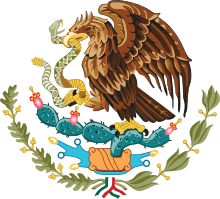Spanish/Lessons/Introducción a la gramática
< Spanish < Lessons

Articles
As in many languages, Spanish gives each noun a gender: masculine or feminine, both for singular things and plural ones.
Spanish, like English, has two articles: the definite article ("the") and the indefinite article ("a" or "an"). However, there are 4 forms, depending on the number and gender of the noun. The plural indefinite article is "some" in English.
- If the noun ends in a vowel, to make it plural, add s (gato - "cat"; gatos - "cats").
- If the noun ends in a consonant, to make it plural, add es (papel - "paper"; papeles - "papers").
Happily, the gender of Spanish nouns is usually pretty easy to work out. Some very simple rules-of-thumb:
- If it ends in a, d, z or ión: it's likely to be feminine.
- If it ends in o, or a consonant: it's likely to be masculine.
Definite articles
|
Spanish Grammar • Introducción a la gramática
| ||||
|---|---|---|---|---|
| masculine | singular | el | el hombre | the man |
| plural | los | los niños | the boys | |
| feminine | singular | la | la mujer | the woman |
| plural | las | las niñas | the girls | |
Indefinite articles
|
Spanish Grammar • Introducción a la gramática
| ||||
|---|---|---|---|---|
| masculine | singular | un | un hombre | a man |
| plural | unos | unos niños | some boys | |
| feminine | singular | una | una mujer | a woman |
| plural | unas | unas niñas | some girls | |
Regular Verbs
We have already seen the present tense conjugations of two Spanish verbs, llamarse and tener. However, tener (to have) is an irregular verb. Luckily, many verbs follow an easy to understand conjugation scheme.
In Spanish, the conjugation of a regular verb depends on the ending of its infinitive. (The infinitive is the basic form of the verb that you find in the dictionary; for example, English infinitives are always written with to, like the verbs to run or to speak.) All Spanish infinitives end in the letter r, and the three regular conjugation patterns are classified into -ar, -er, and -ir verbs.
Unlike English, Spanish verbs conjugate depending on the person; that is, they change depending on who is being talked about. This occurs in the English verb to be (e.g. I am, you are, he is, etc.) but in Spanish this occurs for all persons in all verbs. As a result, pronouns are usually omitted because they can be inferred from the conjugation.
- The pronouns
| Person in English | Person in Spanish | |||
|---|---|---|---|---|
| Singular | Plural | Singular | Plural | |
| First | I | We | Yo | Nosotros |
| Second | You | You all | Tú | Vosotros |
| Third | He / She / It | They | Él / Ella Usted | Ellos / Ellas Ustedes |
Spanish distinguishes between the singular you (informal tú, formal usted) and the plural you (informal vosotros, formal ustedes). Both tú and vosotros have their own conjugation patterns; usted follows the same pattern as él/ella and ustedes follows the same pattern as ellos.
In Latin America, vosotros is almost unheard of, and ustedes is exclusively used instead.
Nosotros (we) has a feminine nosotras that is used when the entire group is composed of females. Likewise, vosotros and ellos have feminine forms vosotras and ellas.
- The Present Tense in English
| Present Tense (en) | ||
|---|---|---|
| Singular | Plural | |
| First | I play | We play |
| Second | You play | You all play |
| Third | He / She / It plays | They play |
- The Present Tense in Spanish
|
| ||||||||||||||||||||||||||||||
|
| ||||||||||||||||||||||||||||||
|
| ||||||||||||||||||||||||||||||
- More examples
- Llorar ("to cry"): lloro, lloras, llora, lloramos, lloráis, lloran
- Cocinar ("to cook"): cocino, cocinas, cocina, cocinamos, cocináis, cocinan
- Comer ("to eat"): como, comes, come, comemos, coméis, comen
- Leer ("to read"): leo, lees, lee, leemos, leéis, leen
- Vivir ("to live"): vivo, vives, vive, vivimos, vivís, viven
- Cubrir ("to cover"): cubro, cubres, cubre, cubrimos, cubrís, cubren
- Notes
- There are many more "-ar" verbs than "-er" or "-ir". Make sure you are most familiar with these endings.
- The second person plural is highlighted because that tense is only used in the variety of Spanish used in Spain. In other Spanish dialects the third person plural form is used instead.
- When reading texts, you will need to know the person of the verb at a glance. Notice the pattern:
- "O" denotes I
- "S" denotes You
- A vowel that is not "O" denotes He/She/It
- "MOS" denotes We
- "IS" denotes You All
- "N" denotes They
Questions and Exclamations
In previous lessons, you will have noticed that we use the funny upside-down question mark "¿". In Spanish, questions always start with that, and finish with the regular question mark. It is the same for exclamations; the funny upside-down exclamation mark "¡" precedes exclamations.
This happens because Spanish does not reverse the word order to ask a question. While English says You are here / Are you here?, Spanish keeps the same order: Tú estás aquí / ¿Tú estás aquí? Whereas the English word order alerts you since the beginning that what you are going to read is a question, Spanish offers no such initial warning. To compensate for this, Spanish adds the initial question mark, so that you'll always be able to tell a declarative statement from a question from the moment you begin reading it.
Questions in Spanish are mainly done by intonation (raising the voice at the end of the question), since questions are often identical to statements. Te llamas Richard means "Your name is Richard", and ¿Te llamas Richard? means "Is your name Richard?".
You can also use questions words, as indicated below.
|
Spanish Vocabulary • Introducción a la gramática
| |
|---|---|
| Español | Inglés |
| ¿Dónde? | Where? |
| ¿Quién? | Who? |
| ¿Qué? | What? |
| ¿Cuál? | Which? |
| ¿Cómo? | How? (as in How does it work?) |
| ¿Cuán? | How? (as in How long is it?) |
| ¿Por qué? | Why? |
| ¿Cuándo? | When? |
| ¿Cuánto? | How much? |
| ¿Cuántos? | How many? |
| ¿De quién? | Whose? |
| ¿A quién? | Whom? |
| ¿De dónde? | Whence? |
| ¿Adónde? | Whither? |
| ¿Para qué? | Wherefore? |
- Examples
- ¿Con quién?
- With whom?
- ¿Dónde está el banco?
- Where is the bank?
- ¿Cuándo es tu cumpleaños?
- When's your birthday?
- ¿Qué fecha es hoy?
- What is the date today?
- Notes
- If you refer to a group of people, you can use the plural quiénes.
- Cuánto and cuántos have feminine forms cuánta and cuántas.
- The archaic cúyo was used in place of de quién. You may still find it in books from the early 20th century. Outside of questions, the corresponding pronoun cuyo is still used to mean whose in declarative statements. (Feminine cuya; plural cuyos; feminine plural cuyas; this pronoun's number and gender agree with that which is possessed, not the possessor.)
- Cuán is gradually becoming archaic and being replaced by qué tan.
Summary
In this lesson, you have learned:
- The Spanish articles (el; la; los; las; un; una; unos; unas).
- How to conjugate regular verbs in the present tense (lloro; comes; vive; cocinamos; bebéis; cubren).
- How to question people and exclaim in Spanish (¿Cuántos años tienes?; ¡Qué fantástico!)
You should now do the exercise related to each section (found here) before moving on. This is a very important topic for future lessons; it's important that you know it well.
You have now completed this chapter! Return to the Contents...
.svg.png) |
¡Aprovéchalo! |
 |